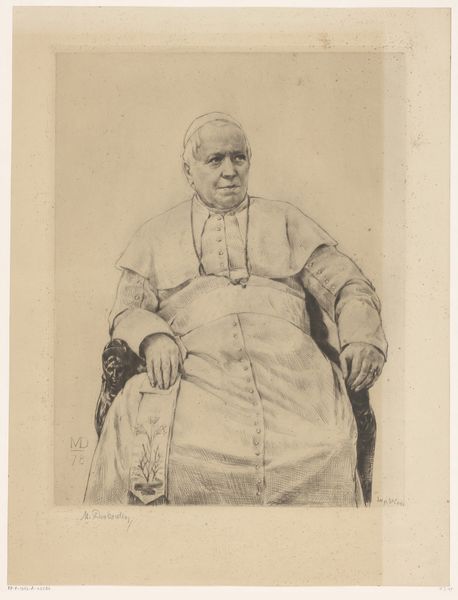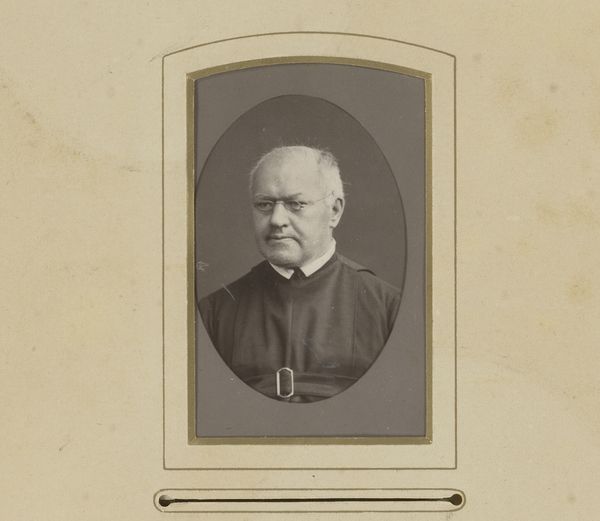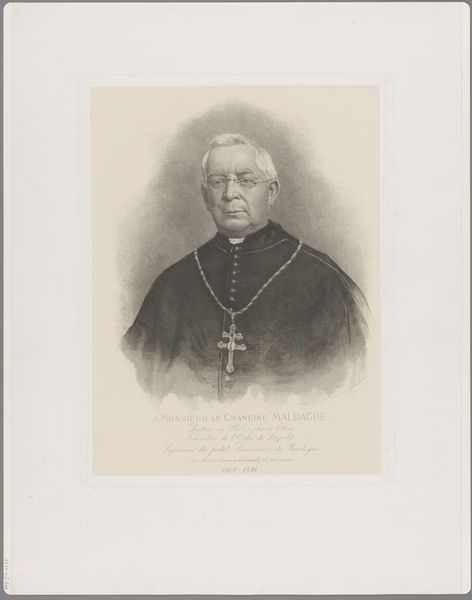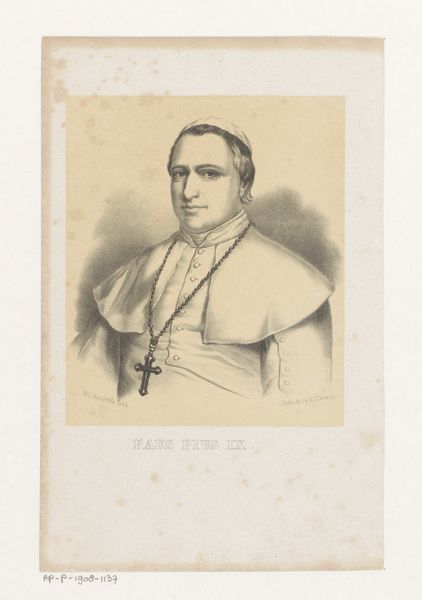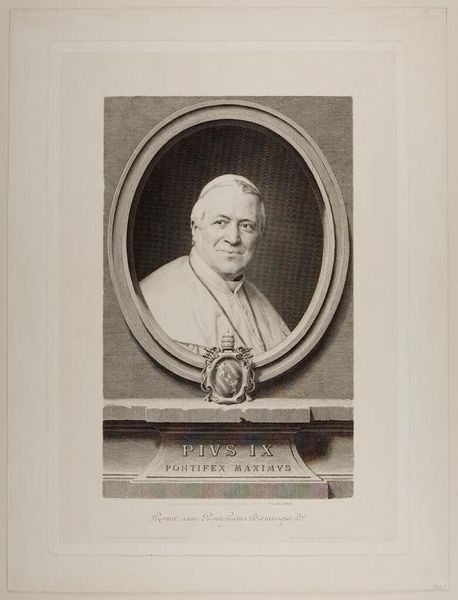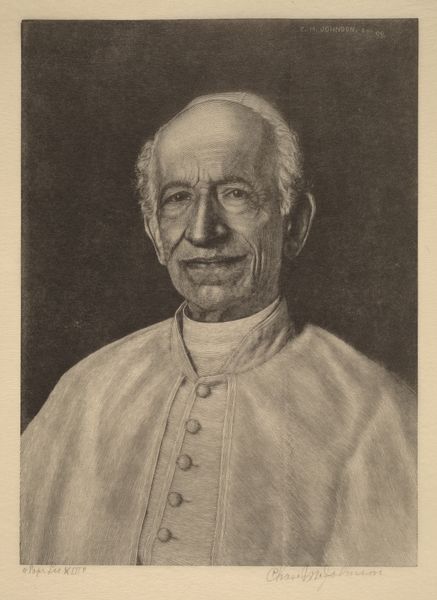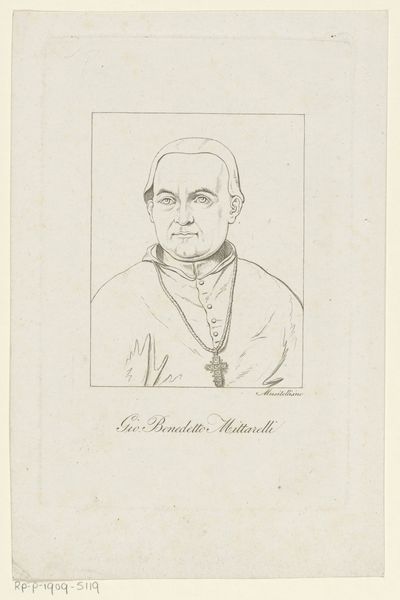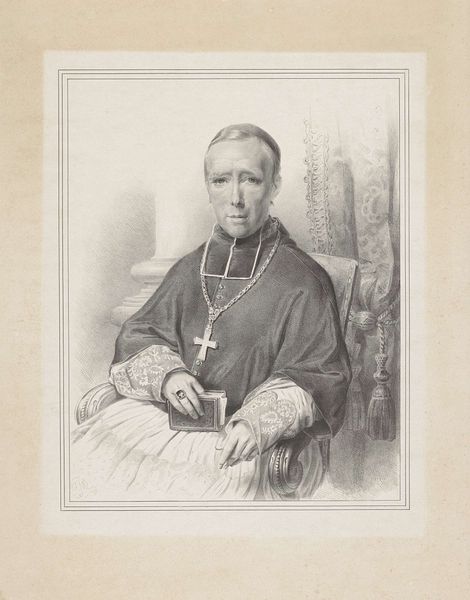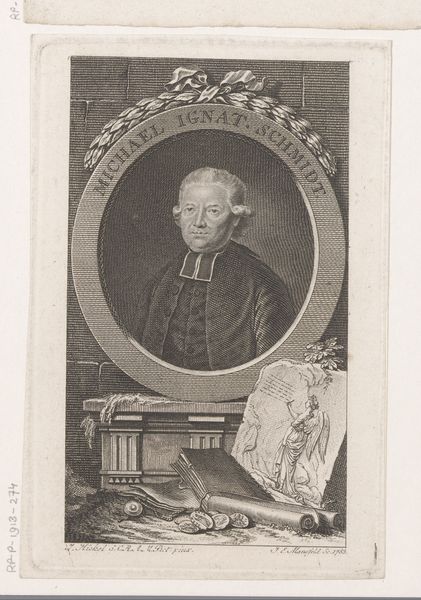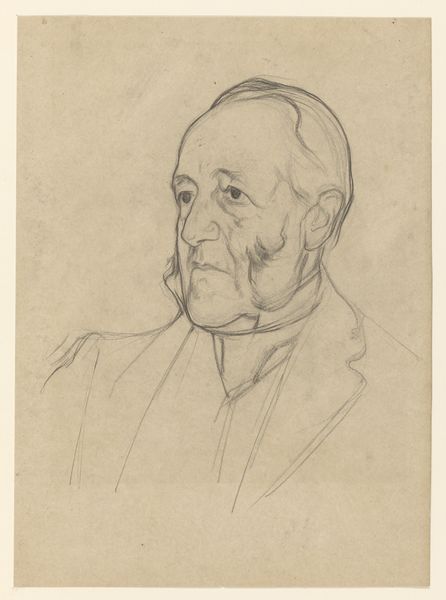
photography, gelatin-silver-print
#
caricature
#
photography
#
gelatin-silver-print
#
academic-art
Dimensions: height 86 mm, width 55 mm
Copyright: Rijks Museum: Open Domain
Editor: So, here we have a gelatin-silver print from around the 1860s to 1880s. It’s a reproduction of what’s believed to be a drawing of Pope Pius IX. I'm struck by how this image, though photographic, seems to harken back to older, more idealized depictions of religious figures, but maybe with a hint of… caricature? What do you make of it? Curator: I see a layering of symbolism, a palimpsest of power. The photograph, as a reproduction, inherently speaks to the dissemination of the Pope’s image, and with that, his influence. Note the rosary beads in his hand; a potent emblem. But what feeling does the *act* of reproduction invoke in you? Editor: Well, it does make it feel slightly detached from the original, a step removed from reality. Does the style - being based on a drawing, not an original photo, give the image extra cultural weight or does it somehow dilute the message? Curator: The style acts as a deliberate invocation of tradition, think of the Papal portraits spanning centuries, each contributing to a collective understanding of authority. This photograph attempts to tap into that reservoir, reinforcing the established perception. But even in doing so, it participates in a changing visual landscape. How do you interpret that slight smile playing on his lips? Editor: I guess it gives him a sense of approachability that you don't normally see in official portraits. It's like they're trying to soften the image while maintaining that authority. Curator: Precisely. The artist grapples with tradition and the nascent power of photography, revealing anxieties and aspirations. The photograph reveals the cultural memory and, I suppose, future continuities of the Church. Editor: I didn’t think about the push and pull between those two, the tradition and the photographic medium itself. Thanks for the insight. Curator: It's a fascinating conversation – every detail a potential thread leading to understanding the period's complex relationship to power and faith.
Comments
No comments
Be the first to comment and join the conversation on the ultimate creative platform.
